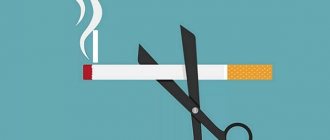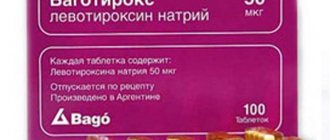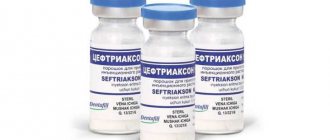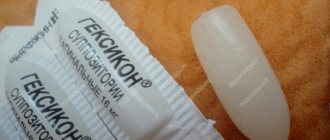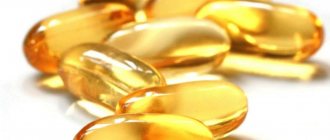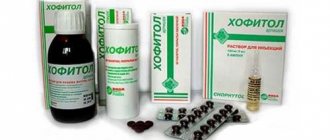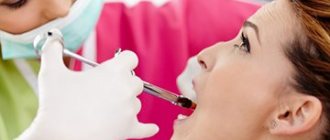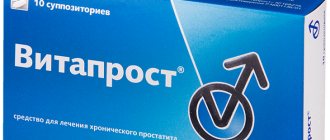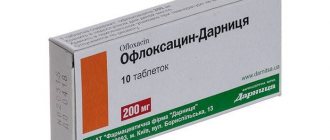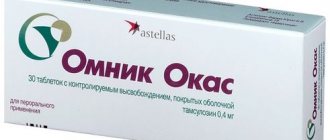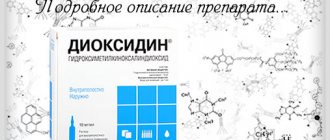Pharmacological group
The active substance stabilizes the membranes of overexcited neurons, blocks serial discharges of neurons and reduces the synaptic transmission of excitatory impulses. The mechanism of action of the drug is not fully understood. It is assumed that as a result of blockade of Na channels, the reappearance of action potentials in depolarized neurons, which depend on sodium ions, is prevented. Reduces the release of the neurotransmitter glutamate. The psychotropic effect of the drug is most likely due to inhibition of dopamine and norepinephrine metabolism.
The active substance reduces the frequency of attacks, eliminates anxiety, aggression, depression and irritability in epileptics, and prevents the occurrence of pain due to neuralgia.
With alcohol withdrawal syndrome, tremors, excessive nervous excitability, gait disturbance decrease, and the threshold for convulsive readiness increases.
With diabetes insipidus, the amount of daily urine and the feeling of thirst decrease.
When taken orally, the active substance is slowly absorbed from the gastrointestinal tract. The maximum concentration is reached after 12 hours.
From 70 to 80% of the active substance binds to blood plasma proteins. The drug penetrates the placenta and into breast milk.
It undergoes metabolism in the liver.
After the first dose, the half-life can vary from 25 to 65 hours, after the second dose from 16 to 24 hours.
In children, the drug is eliminated faster than in adults, so they may need a higher dosage of medication per kg of body weight compared to adult patients.
What are the benefits of Carbamazepine tablets for patients with epilepsy?
In patients with epilepsy, this drug increases the reduced seizure threshold and thereby reduces the risk of a new attack. The drug has also proven itself to be excellent for correcting personality changes (as a result of its use, communication skills increase and social rehabilitation of such patients is facilitated).
In adolescent patients and children, the use of the drug reduces depression, uncertainty, nervousness and aggressiveness. But it is necessary to take into account that the effect of the drug on cognitive functions (memory, motor coordination, attention, speech, thinking abilities, orientation, etc.) may vary depending on the dosage, and at the same time very individually!
True, some patients, leaving their reviews, mention Carbamazepine as a drug that has little effectiveness as a means to combat depression or in situations with mental problems. By the way, they also complain that the constant use of this drug implies mandatory observation by a doctor and periodic examinations and tests.
Indications for use
for adults
Carbamazepine is prescribed if the following pathologies are observed:
- epilepsy;
- pain from diabetic neuropathy;
- increased urine volume and pathologically strong thirst of neurohormonal etiology in diabetes insipidus;
- alcohol withdrawal syndrome;
- neuralgia of the trigeminal and glossopharyngeal nerve;
- acute manic syndrome and maintenance therapy of bipolar disorders to prevent exacerbations or reduce the severity of clinical manifestations.
for children
For children, the drug can be prescribed from birth for epilepsy and diabetes insipidus.
for pregnant women and during lactation
The drug can be prescribed to pregnant women according to indications, in cases where the benefits to the mother outweigh the possible risks to the fetus. The active substance penetrates the placental barrier and can cause fetal malformations.
The drug should not be taken during lactation; if it cannot be avoided, the baby should be switched to formula.
Precautionary measures
Before prescribing the drug, the doctor examines the results of a patient’s blood and urine tests in order to monitor indicators reflecting the functionality of the liver and kidneys.
During drug therapy, the patient periodically undergoes repeated tests to monitor the condition of the internal organs responsible for metabolism.
If problems with the cardiovascular system, gastrointestinal tract or respiratory tract are diagnosed, then before prescribing, the attending physician consults with a specialist about the possibility of using the drug.
In case of any unusual manifestations during the period of taking the tablets, you need to inform your doctor about what is happening. During a long course of therapy, the active substance affects consciousness. Exacerbation of anxiety and fears can lead to dire consequences, so close cooperation with a specialist cannot be ignored.
Contraindications
Carbamazepine should not be taken if you experience:
- atrioventricular block:
- taking MAO (after completion of treatment with drugs of this group, 2 weeks should pass, after which it is permissible to take carbamazepine);
- a history of bone marrow hematopoiesis disorder;
- individual intolerance to the composition of the drug, as well as medications that have a similar chemical structure to it (tricyclic antidepressants);
- hepatic porphyrias.
Treatment should be prescribed with caution in old age, as well as if:
- thrombocytopenia and leukopenia;
- glaucoma;
- mixed forms of epileptic seizures, including absence seizures;
- heart, kidney and liver failure;
- decreased thyroid function;
- prostatic hyperplasia;
- dilution hyponatremia.
Properties and getting
According to its physical properties, carbamazepine is a white crystalline powder, practically insoluble in water (18 mg/l at a temperature of 25°C), soluble in ethanol, propylene glycol, acetone and other organic solvents. Melting point 190.2 °C.
Structurally, carbamazepine is close to tricyclic antidepressants (for example, it is structurally similar to imipramine).
In finished dosage forms, carbamazepine can be presented in the form of a dihydrate.
Synthesis of carbamazepine[2]:
Applications and dosages
for adults
The drug is taken orally, regardless of food, with a small volume of liquid.
The dosage of the medication is selected individually depending on the disease and clinical picture:
- Epilepsy. It is advisable to prescribe carbamazepine as a single drug. Therapy begins with a small daily dosage, which is then slowly increased until the optimal effect is achieved. If carbamazepine is added to an already ongoing antiepileptic therapy, this should be done gradually. The initial dosage can vary from 100 to 200 mg 1 or 2 times a day. It is gradually increased to 400 mg, the frequency of administration is 2-3 times a day. The highest daily dosage is 2 g.
- Neuralgia of the V and IX pairs of cranial nerves. Therapy should begin with a daily dosage of 200-400 mg, then gradually increase it, but not more than 200 mg per day until the pain goes away (usually up to 600-800 mg per day) and then reduce it to a minimum effective dosage. For patients in the older age group, the initial daily dosage should be 200 mg, taken 2 times.
- Pain due to diabetic neuropathy. A single dosage is 200 mg, the drug should be taken 2-4 times a day.
- Alcohol withdrawal syndrome. The dosage is selected depending on the clinical picture. The average dosage is 200 mg, the frequency of administration is 3 times a day. In severe cases, a single dosage can be 400 mg, daily - 1200 mg.
- Polydipsia and polyuria in diabetes insipidus. The average single dosage is 200 mg, the frequency of administration can vary from 2 to 3 times a day.
- Acute manic syndrome and maintenance therapy of bipolar disorders: the daily dosage can vary from 200 to 1600 mg, it should be taken 2-3 times. In acute cases, the dosage is increased quickly; in other cases, the dosage increase should be slow and small.
for children
For epilepsy in children under 5 years of age, the drug is prescribed in a daily dosage of 20 to 60 mg, then increased by 20-60 mg every 2 days. For patients over 5 years of age, the medication is prescribed at an initial daily dosage of 100 mg, then it is increased weekly by 100 mg. The maintenance daily dosage for children is 10-20 mg per kg of weight, it should be divided into 2-3 times.
For polyuria and polydipsia in diabetes insipidus, the treatment regimen is selected by the doctor individually depending on the age and weight of the child.
for pregnant women and during lactation
Pregnant patients do not require dosage adjustment; the treatment regimen is selected individually depending on the indications.
Price
You can purchase an antiepileptic drug at a pharmacy upon presentation of a prescription sheet.
The price depends on the number of tablets in the package:
- 40 pcs. Carbazepine 200 mg – 52-60 rubles ;
- 50 pcs. Carbazepine 200 mg – 59-68 rubles .
Differences in costs are due to regional factors and the commercial policies of pharmaceutical companies.
According to the rules for preparing medical documents, a prescription in Latin.
Side effects
Treatment with the drug can provoke a number of adverse reactions, such as:
- vertigo, drowsiness, weakness, headaches, double vision, accommodation disturbance, ataxia, trembling of limbs and pupils, hypotonicity or hypertonicity of muscles, tics, taste perversion, orofacial dystonia, speech and sensitivity disorder, polyneuropathy, neuroleptic malignant syndrome;
- hallucinations, depression, refusal to eat, anxiety, aggression, increased psychosis, severe emotional arousal, disorientation;
- allergic and exfoliative dermatitis, urticaria, photosensitivity, acne, alopecia, hairiness, systemic lupus erythematosus, sweating, itching, skin pigmentation disorders, erythroderma, malignant exudative erythema, Lyell's syndrome, purpura, erythema multiforme and erythema nodosum;
- decrease in leukocytes, platelets, hemoglobin, lack of folic acid, increase in eosinophils and reticulocytes, enlargement of lymph nodes, true erythrocyte aplasia, various forms of porphyria;
- liver dysfunction, inflammation, jaundice, liver failure;
- nausea, inflammation of the tongue and pancreas, stomatitis, vomiting, loose stools, constipation, dry mouth, abdominal pain;
- joint pain;
- aseptic meningitis;
- anaphylaxis, Quincke's edema;
- blockades, hypotension, hypertension, decreased heart rate, arrhythmia, progression of ischemic heart disease, fainting, sharp drop in blood pressure, thrombophlebitis, thromboembolism;
- weight gain, edema, decreased sodium levels in the blood, decreased plasma osmolarity, fluid retention, water intoxication (manifested by lethargy, vomiting, cephalgia, spatial disorientation), increased levels of prolactin, TSH and cholesterol, galactorrhea, gynecomastia, decreased number of thyroid hormones hormones, increased TSH, osteomalacia;
- impaired sexual function and sperm formation, frequent urination, renal failure, blood and protein in the urine, decreased amount of urine, increased nitrogen compounds in the blood, tubulointerstitial nephritis;
- perversion of taste, hearing disorders, cataracts, glaucoma, conjunctivitis;
- myalgia, convulsions, myasthenia gravis;
- temperature, dyspnea, pneumonia, pulmovitis;
- low level of immunoglobulins in the blood serum.
Notes
- Order of the Government of the Russian Federation of December 7, 2011 N 2199-r, Moscow // Rossiyskaya Gazeta
. - Federal issue, 2011. - No. 5660. - Schindler, W.; 1960, US Patent 2,948,718.
- W. Schindler, F. Häfliger
Über Derivate des Iminodibenzyls (English) //
Helvetica Chimica Acta
. - 1954. - V. Volume 37, Issue 2. - P. 472-483. - Okuma T, Kishimoto A.
A history of investigation on the mood stabilizing effect of carbamazepine in Japan (English) //
Psychiatry Clin Neurosc
. - 1998. - V. 52(1). - P. 3-12. - PMID 9682927. - Willow M., Kuenzel EA, Catterall WA
Inhibition of voltage-sensitive sodium channels in neuroblastoma cells and synaptosomes by the anticonvulsant drugs diphenylhydantoin and carbamazepine (English) //
Molecular Pharmacology
. - 1984. - T. 25. - No. 2. - P. 228-234. - Granger P., Biton B., Faure C.
Modulation of the gamma-aminobutyric acid type A receptor by the antiepileptic drugs carbamazepine and phenytoin (English) //
Molecular Pharmacology
. - 1995. - T. 47. - No. 6. - P. 1189-1196. - ↑ 1 2
Search in the drug database, search options: INN -
Carbamazepine
, flags
“Search in the register of registered drugs”
,
“Search TKFS”
,
“Show lekforms”
.
Circulation of medicines
. Federal State Institution “Scientific Center for Expertise of Medical Products” of Roszdravnadzor of the Russian Federation (08/23/2010). Archived from the original on February 3, 2012. Retrieved January 22, 2012. - Pienimäki P, Hartikainen AL, Arvela P, Partanen T, Herva R, Pelkonen O, Vähäkangas K.
Carbamazepine and its metabolites in human perfused placenta and in maternal and cord blood //
Epilepsia
. - 1995. - PMID 7614907. - Larry A.
Applied Clinical Pharmacokinetics. - McGraw-Hill, 2008. - V. 2. - ISBN 978-0-8385-0388-1. - Hung CC, Chang WL, Ho JL, Tai JJ, Hsieh TJ, Huang HC, Hsieh YW, Liou HH.
Association of polymorphisms in EPHX1, UGT2B7, ABCB1, ABCC2, SCN1A and SCN2A genes with carbamazepine therapy optimization //
Pharmacogenomics
. - 2011. - PMID 22188362. - Lexi-Comp
Carbamazepine.
The Merck Manual Professional
(February 2009). Archived from the original on November 18, 2010. Retrieved on May 3, 2009. - eMedicine - Toxicity, Carbamazepine. Archived from the original on August 4, 2008.
- ↑ 12345
Description of the substance Carbamazepine: instructions, use, contraindications and formula - Carbamazepine. The American Society of Health-System Pharmacists
. Archived from the original on February 3, 2012. Retrieved April 3, 2011. - Rao JS, Bazinet RP, Rapoport SI, Lee HJ.
Chronic administration of carbamazepine down-regulates AP-2 DNA-binding activity and AP-2alpha protein expression in rat frontal cortex //
Biol Psychiatry
. - 2007. - PMID 16806101. - Ceron-Litvoc D, Soares BG, Geddes J, Litvoc J, de Lima MS (January 2009). "Comparison of carbamazepine and lithium in the treatment of bipolar disorder: a systematic review of randomized controlled trials." Hum Psychopharmacol 24
(1):19–28. DOI:10.1002/hup.990. PMID 19053079. - Poetter CE, Stewart JT.
Treatment of indiscriminate, inappropriate sexual behavior in frontotemporal dementia with carbamazepine //
J Clin Psychopharmacol
. - 2012. - PMID 22217950. - De Vriese AS, Philippe J, Van Renterghem DM, De Cuyper CA, Hindryckx PH, Matthys EG, Louagie A.
Carbamazepine hypersensitivity syndrome: report of 4 cases and review of the literature //
Medicine
. - Baltimore, 1995. - PMID 7760721. - Gandelman MS.
Review of carbamazepine-induced hyponatremia //
Prog Neuropsychopharmacol Biol Psychiatry
. - 1994. - PMID 8208974. - ↑ 123
Description of Carbamazepine - Radar Encyclopedia: instructions for use of the drug Carbamazepine and composition, reviews, contraindications, Carbamazepine at low prices in pharmacies - Richard H. Mattson, MD, Joyce A. Cramer, B.S., Joseph F. Collins, Sc.D., and the Department of Veterans Affairs Epilepsy Cooperative Study No.
264 Group* A Comparison of Valproate with Carbamazepine for the Treatment of Complex Partial Seizures and Secondarily Generalized Tonic–Clonic Seizures in Adults //
N Engl J Med
. - 1992. https://www.nejm.org/doi/full/10.1056/NEJM199209103271104 - Cipriani A, Rendell JM, Geddes JR.
Haloperidol alone or in combination for acute mania //
Cochrane Database Syst
Rev. - 2006. - PMID 16856043. - Sato J, Saitoh T, Notani K, Fukuda H, Kaneyama K, Segami N.
Diagnostic significance of carbamazepine and trigger zones in trigeminal neuralgia //
Oral Surg Oral Med Oral Pathol Oral Radiol Endod
. - 2004. - PMID 14716252. - Powell G., Saunders M., Marson AG
Immediate-release versus controlled-release carbamazepine in the treatment of epilepsy //
Cochrane Database of Systematic Reviews 2010, Issue 1
. — Art. No.: CD007124. DOI: 10.1002/14651858.CD007124.pub2. - Wang M, Rutledge GC, Myerson AS, Trout BL.
Production and characterization of carbamazepine nanocrystals by electrospraying for continuous pharmaceutical manufacturing //
J Pharm Sci
. - 2011. - PMID 22189503.
Interaction with other drugs
When taken in parallel with blockers of the CYP 3A4 isoenzyme, an increase in the level of carbamazepine in plasma is possible. Taking it with inducers of the CYP3A4 isoenzyme, on the contrary, can cause a decrease in the concentration of the anticonvulsant in the blood and an acceleration of its metabolism.
They increase the level of carbamazepine: dextropropoxifen, verapamil, grapefruit juice, felodipine, diltiazem, ibloprofen, fluoxetine, fluvskamin, omeprazole, dezipramine, tsimetidine, Danazole, acuteazolamide, nicotinamide (in high -year -old patients, production, macrolids, macrolids, macrolids, macrolids) nisola, loratadine, terfenadine, isoniazid, protease inhibitors.
Reduce the level of anticonvulsants in the blood: theophylline, herbal remedies based on St. John's wort, some antibiotics (doxorubicin, rimapicin), felbamate, felodipine, primidone fensuximide, phenobarbital, phenytoin, methsuximide, cisplatin, possibly: valproic acid, valpromide, clonazepam. During therapy, the concentration of a number of medications may decrease, the therapeutic effect of which decreases or completely disappears: opioid analgesics, neuroleptics, oral anticoagulants, antidepressants including tricyclics, antiepileptic drugs, antiretroviral drugs, cardiac glycosides, oral contraceptives, corticosteroids, immunosuppressants , Ca2+ channel inhibitors of the dihydropyridine group, non-depolarizing muscle relaxants, paracetamol, antipyrine, doxycycline, itraconazole, praziquantel, imatinib, alprazolam, midazolam, theophylline, sodium levothyroxine.
Phenytoin levels may increase or decrease while taking carbamazepine, while mephenytoin levels may increase.
With a combination of carbamazepine:
- with isoniazid there is a possibility of increased hepatotoxicity;
- with lithium preparations, metoclopramide, antipsychotics, the likelihood of unwanted neurological reactions increases;
- With some diuretics, signs of hyponatremia may occur.
When taken together with levetiracetam, there is a risk of increased toxic effects of carbamazepine.
Content
- 1 Properties and receipt
- 2 History
- 3 Pharmacology 3.1 Pharmacodynamics
- 3.2 Pharmacokinetics
- 3.3 Interaction with other drugs
- 7.1 General
- 8.1 Carbamazepine and seizures
special instructions
Before starting therapy, as well as periodically during it, it is worth taking a general blood and urine test to determine the concentration of urea in the bloodstream.
The medication has a weak anticholinergic effect, so when treating patients with glaucoma, intraocular pressure must be constantly monitored.
It is necessary to periodically determine the content of carbamazepine in the blood plasma if, while taking the drug, cases of epileptic seizures have become more frequent, it is taken for the treatment of children and pregnant women, it is prescribed in combination with other medications, or severe adverse reactions are observed during therapy.
There is information about disturbances in male fertility and spermatogenesis, although there is no direct evidence that such deviations are provoked by taking an antiepileptic drug.
A cross-allergic reaction may occur between carbamazepine and phenytoin or oxcarbazepine.
During treatment, you should refrain from drinking alcohol, as the anticonvulsant enhances the inhibitory effect of alcohol on the central nervous system.
While taking medication, you need to be careful when driving a car.
Carbamazepine and alcohol: compatibility
Pharmacological agents and alcoholic beverages are incompatible, despite the use of the drug for the treatment of withdrawal symptoms.
Under the influence of the drug, the effect of alcohol increases and its tolerance worsens.
In turn, ethanol reduces the effectiveness of Carbamazepine. In the process of metabolizing chemicals and alcoholic beverages, the liver experiences enormous stress. As a result of poor-quality processing of the drug, the lion's share of toxins remains in the body.
The consequences of combining ethanol with Carbamazepine cannot be predicted. In addition to increasing the risk of side effects, inhibition of the nervous system increases, the speed of transmission of nerve impulses decreases, preconditions are created for the manifestation of hallucinations, weakening of the physical condition of the body, and impaired coordination of movement.
Overdose
Increasing the recommended dosage can provoke an overdose of the drug, which is manifested by the following symptoms:
- depression of the central nervous system, coma, drowsiness, dilated pupils, “fog” before the eyes, excessive excitement, hallucinations, impaired speech and spatial orientation, convulsions, trembling pupils, ataxia, hyperkinesis, increased and decreased reflexes, psychomotor disorders, myoclonus, decreased body temperature below 35 degrees;
- pulmonary edema and respiratory depression;
- increased heart rate, hypotension and hypertension, cardiac arrest, intracardiac conduction disturbances;
- vomiting, weakened colon motility, delayed evacuation of food from the stomach;
- retention of urine and fluid, a decrease in its amount or its complete absence, dilution hyponatremia;
- metabolic acidosis, increased levels of sugar and muscle fraction of CPK, decreased sodium in the blood.
Since there is no specific antidote, therapy is aimed at eliminating signs of intoxication. Gastric lavage is performed and activated carbon is prescribed (due to late evacuation of stomach contents, delayed absorption and the appearance of re-intoxication may occur on 2-3 days), hemosorption on carbon sorbents is effective.
Dosage forms
As of 2012, there are various brands of carbamazepine on the pharmaceutical market in Russia: “Zeptol”
from
Sun Pharmaceutical Industries
(India),
Tegretol
from
Novartis
(France),
Finlepsin
from
Pliva
(Poland), as well as many generics produced in Russia, Canada, India and China with a significant price range.
Carbamazepine is mainly available in the form of 200 mg tablets (Tegretol is also available in 400 mg tablets). In addition, the pharmaceutical company Novartis
produces carbamazepine in the form of a 100 mg/5 ml syrup (under the same brand name) for use in pediatrics.[7]
A number of manufacturers produce modified-release dosage forms of carbamazepine - extended-release tablets (retard) of 200 and 400 mg. In addition to the trademarks “Zeptol”, “Tegretol CR” and “Finlepsin retard” from the above manufacturers, this formulation is also produced by the Russian enterprise Akrikhin KhFK OJSC under the name “Carbalepsin retard”
. An important advantage of the prolonged form is that it can be taken 1-2 times a day (usually once at night). In some patients, when switching to retard tablets, dosage adjustment may be required, although usually there is no need to increase the dose.
Developers of modified dosage forms indicate that the prolonged dosage form ensures the maintenance of a more stable concentration of carbamazepine in the blood without “peaks” and “troughs”, which, according to their data, makes it possible to increase the effectiveness of therapy even when using relatively low doses, as well as reduce the frequency and severity of complications associated with a sharp increase in the level of plasma concentration of the drug (such as dizziness, drowsiness, loss of coordination, etc.).
However, according to the results of an independent meta-analysis of the results of ten clinical studies conducted, it was found that only one of them showed statistically significant differences between the long-acting and regular forms of carbamazepine, expressed in a decrease in the number of attacks in patients who were prescribed retard tablets. The remaining studies found no significant differences in effectiveness. And although patients taking the modified form of carbamazepine generally experienced fewer side effects (a certain reduction in their number was recorded in four of the nine trials), the authors of the analysis noted that the available data is insufficient to formulate reliable conclusions.[24]
Currently, other developments of new dosage forms of carbamazepine are emerging. Thus, in December 2011, employees of the Novartis
It was reported that they had developed a method for obtaining carbamazepine nanocrystals using electrospray technology followed by annealing at high temperatures. The solubility and dissolution rate of carbamazepine nanocrystals increased significantly compared to standard particles of carbamazepine, which is poorly soluble under normal conditions. The publication states that electrospray technologies have the potential to produce dosage forms with increased bioavailability that can be easily integrated into a continuous pharmaceutical manufacturing process.[25]
Analogs
You can replace Carbamazepine with the following medications:
- Tegretol is an original drug that contains carbamazepine. The drug is available in syrup, capsules and tablets. Tegretol can be taken to treat patients of all ages, including pregnant women and breastfeeding women.
- Finlepsin is a high-quality complete analogue of Carbamazepine. It is available in tablets that can be prescribed to patients over 1 year of age. Finlepsin can be prescribed with caution to pregnant and lactating patients.
- Algerica is a substitute for Carbamazepine in the clinical and pharmacological group. The medicine is produced in capsules, which are used as an anticonvulsant in adult patients. They are not recommended for pregnant and breastfeeding women.
- Exalief is an anticonvulsant. The drug contains eslicarbazepine acetate as the active component. It is available in tablets that cannot be prescribed to children. Treatment with an anticonvulsant should be carried out with caution during pregnancy; it is recommended to interrupt breastfeeding during therapy.
Scientific research
Carbamazepine and seizures
A study was carried out on 480 patients with partial and secondary generalized epileptic seizures. Patients were randomly assigned to receive either carbamazepine or valproate for 1 to 5 years. The effectiveness of both drugs in the treatment of generalized epileptic seizures was almost identical, and in the treatment of complex partial seizures, carbamazepine was more effective than valproate in four of the five parameters assessed:
- By total number of attacks
- Number of attacks per month
- Duration of remission period
- Intensity of convulsive attacks.
The total number of patients in remission after testing with carbamazepine was 34% (75% for generalized tonic-clonic seizures, 62% for complex partial seizures).
This led to the conclusion that carbamazepine and valproate can be used with equal effectiveness in the treatment of secondary generalized epileptic seizures, but for complex partial seizures, carbamazepine is more effective.[21]
Carbamazepine and bipolar disorder
In studies examining the effect of haloperidol on the relief of manic states, conducted with the participation of 2022 patients, it was possible to show that there are no significant differences in the effectiveness of haloperidol, risperidone, olanzapine, carbamazepine
or valproate[22].
Carbamazepine and the trigger zone of trigeminal neuralgia
To investigate the relationship between the effectiveness of carbamazepine and the presence of a trigger zone for the diagnosis of trigeminal neuralgia, carbamazepine was administered to 61 patients suspected of having trigeminal neuralgia. All patients were examined using magnetic resonance imaging or computed tomography. The final diagnosis was made by an oral and maxillofacial surgeon and a neurosurgeon. Of the 61 patients, 50 were definitively diagnosed with trigeminal neuralgia and 6 with atypical facial pain. Carbamazepine was effective as an analgesic in 45 of 50 patients (90%) with trigeminal neuralgia and 5 of 11 patients (45%) with other conditions. However, carbamazepine has relieved pain in some patients who do not have trigeminal neuralgia. In 30 of 31 patients (97%) with a specific trigger zone and in 20 of 30 (67%) without a trigger zone, trigeminal neuralgia was diagnosed, which led to the conclusion that the effectiveness of carbamazepine is an auxiliary indicator of trigeminal neuralgia, and the presence of a specific trigger zone is a strong indicator.[23]
Composition and form of production
In addition to the main active ingredient in a dosage of 0.2 g for each tablet, the drug also contains additional ingredients:
- potato starch;
- talc;
- magnesium stearate;
- polysarbate;
- povidone;
- silica.
The drug is produced exclusively in the form of tablets, packaged in blisters of 10 pieces. Plates with medication, in turn, can be packaged in cardboard boxes of 5 or 10 blisters. An annotation for the drug must be included in the packaging.
Toxicokinetics
Carbamazepine is almost completely absorbed orally after oral administration (bioavailability reaches 85%). With continuous use, maximum serum concentration is achieved after 8-16 hours. Biotransformation of the drug occurs in the liver, where carbamazepine is able to induce microsomal enzymes of the organ. This leads to an acceleration of the metabolism of the drug itself and other drugs that were taken together.
If a large dose of carbamazepine enters the body, an unstable and toxic metabolite of the drug, carbamazepine epoxide, may accumulate in the blood. This substance will determine the development of adverse symptoms from an overdose.
General information
This drug is an anticonvulsant drug produced by the manufacturer only in tablet form.
This medication can be purchased at any hospital pharmacy at a price of about 60 rubles, depending on the owner’s markup. Any analogue of “Carbamazepine” (reviews of which are both positive and negative) costs many times more. Their price category starts from 200 rubles for a similar dosage of the active ingredient.
Analogues of "Carbamazepine" (the price and reviews about them are very different):
- "Tegretol";
- "Finlepsin".
Drug intervention
Intravenous administration
In the toxicology department, intensive therapy is carried out, which is aimed at restoring the functions of the body systems. First of all, the concentration of hydroxycarbamazepine in the blood serum is determined in the laboratory and measured over time until it decreases.
To relieve pathological symptoms, drug therapy is carried out:
- repeated gastric lavage;
- intravenous administration of saline solutions to restore kidney function;
- administration of drugs that stimulate cardiac activity if changes appear on the ECG;
- antibiotics according to indications;
- hepatoprotectors – to improve liver function;
- To relieve convulsive syndrome, benzodiazepine drugs are prescribed.
Important! According to indications, hemosorption (blood purification) can be performed. If the patient is in a severe unconscious state, resuscitation measures are carried out (cardiac stimulation, artificial ventilation).
Causes of poisoning
An overdose of Finlepsin or Carbamazepine occurs as a result of exceeding the permissible limit - a person strives to quickly get rid of cramps or pain, so he takes a significant amount of tablets. In addition, the following factors contribute to intoxication:
- non-compliance with doctor's recommendations;
- self-prescription;
- accidental use by a child;
- suicide attempt.
At the slightest sign of malaise, emergency assistance is called - the therapy is professional in nature, otherwise the death of the victim is likely.
Prohibitions on use
It is first of all prohibited to take such complex drugs on your own. Only a doctor can prescribe them, having correctly calculated the dosage for each specific case. In addition, during therapy the individual sensitivity of the patient to the active substance, any similar antidepressant or excipient should be taken into account.
Reviews of Carbamazepine confirm that the drug cannot be used together with MAO inhibitors. You can start therapy with this drug only two weeks after. Also, contraindications for everyone are problems with hematopoiesis, and for women, additionally, during pregnancy and breastfeeding.
Particular care should be taken when treating with the drug:
- elderly patients;
- together with alcoholic drinks;
- in case of disturbances in the functioning of the heart muscle;
- kidney and liver diseases;
- increased intraocular pressure.
Tegretol or Finlepsin – which is better?
Tegretol is a Swiss drug based on carbamazepine. Both analogues have the same indications, contraindications, and adverse reactions. They differ in cost - the Tegretol analogue is more expensive.
Reviews of both medications from doctors and patients are positive. Dispensed with a doctor's prescription.
To purchase substitutes and Finlepsin, you need a prescription. To prevent unwanted side effects, the choice of an analogue must be agreed upon with the attending physician, who will adjust the dosage according to the patient’s condition, diagnosis, and characteristics.
brief information
What does Carbamazepine help with? This is the first thing that interests patients to whom it was prescribed. Doctors may recommend taking this drug for many problems. But most often these are convulsions, epileptic seizures, depression, involuntary muscle contractions and other disorders of the nervous system.
The drug is prescribed to people of all ages. For some diseases, the tablets are even indicated for adolescents, but in no case should you take Carbamazepine (this is mentioned several times in the instructions for use) without the recommendation of your attending physician. In the case of this drug, self-medication is strictly contraindicated.
Therefore, be very careful and do not be thoughtless about the health of yourself and your loved ones.
Symptoms
According to the international register of medicines ICD-10, carbamazepine poisoning belongs to the group of poisonings with sedatives, anticonvulsants, hypnotics and antiparkinsonian drugs. Intoxication does not manifest itself as a state of intoxication.
The path of medicine to the brain passes through the stomach, intestines, and liver. The kidneys excrete the substance. The drug affects functions such as vision, muscle reflexes, joints, neurons. Therefore, the manifestations of overdose have formed a long list.
Nervous system response:
- Chronic fatigue;
- Voluntary muscle contractions;
- Uncontrolled tongue movements, licking;
- Shifty eyes;
- Deterioration of joint mobility;
- Lack of taste sensations.
In addition, impulses from internal organs do not reach the brain.
Mental disorders are observed. The patient becomes depressed and is susceptible to visual and auditory hallucinations. Anxiety, aggressiveness, and disorientation accompany an overabundance of the substance.
Digestive tract reaction:
- Inflammation of the pancreas;
- Inflammation of the oral mucosa.
An overdose of the drug causes hepatitis. Damage to the liver leads to skin reactions. Lupus and dermatitis develop. Hair loss and increased sweating are noted.
Respiratory function is difficult due to shortness of breath. Inflammatory processes develop into pneumonia.
Heart disorders:
- Blood pressure surges;
- Tachycardia;
- Arrhythmia;
- Slowing heart rate;
- Stagnation of blood in the heart;
- Blood clots in blood vessels.
Heart failure impairs oxygen supply to tissues, causing fainting. Fluid is retained in the body. A person suffers from edema and weight gain. Stagnant fluid contains toxins that have not left the body due to liver and kidney dysfunction. Hence vomiting, nausea, diarrhea, headache.
Pharmacokinetics
Absorption is slow, but quite complete (the intake of food does not significantly affect the speed and degree of absorption). After a single dose, Cmax in blood plasma is achieved after 12 hours.
Equilibrium concentrations of the drug in plasma are achieved after 1-2 weeks. Among patients, there are significant individual differences in the value of equilibrium concentrations in the therapeutic range. The connection with blood plasma proteins is 70-80%. The concentration of unchanged carbamazepine in the cerebrospinal fluid and saliva is proportional to the amount of active substance not bound to proteins (20-30%). The concentration in breast milk is 25-60% of that in plasma. Penetrates through the placental barrier.
Metabolized in the liver, mainly along the epoxide pathway with the formation of metabolites: active - carbamazepine-10,11-epoxide and low-active - 9-hydroxy-methyl-10 carbamoylacridan. The main isoenzyme that ensures the biotransformation of carbamazepine into carbamazepine-10,11-epoxide is the cytochrome P450 3A4 isoenzyme. The content of carbamazepine-10,11-epoxide is about 30% of the plasma level of carbamazepine. The biotransformation of carbamazepine-10,11-epoxide into carbamazepine-10,11-transdiol occurs with the help of the microsomal enzyme epoxide hydrolase. Another pathway of carbamazepine metabolism is the formation of various monohydroxylated derivatives, as well as N-glucuronides.
T1/2 after a single dose averages about 36 hours (ranges from 25 to 65 hours), after repeated doses - 16-24 hours. In patients receiving additional antiepileptic drugs that induce liver enzymes, an average of 9-10 hours. It is excreted primarily as inactive metabolites in urine (approximately 70%) and feces (approximately 30%). About 2% is excreted in the urine as unchanged carbamazepine and 1% as carbamazepine-10,11-epoxide.
In children, due to the faster elimination of carbamazepine, higher doses of the drug per kg of body weight may be required compared to adults.
There is no evidence that the pharmacokinetics of carbamazepine changes in elderly patients.
There are no data on the pharmacokinetics of carbamazepine in patients with impaired renal or hepatic function.
Carbamazepine or Finlepsin – which is better?
Carbamazepine is a domestic analogue of Finlepsin with the same active ingredient. It has the same therapeutic effect, the indications, contraindications and side effects are similar. The cost of the medicine is up to 5 times lower.
The difference between the analogue is that it is produced in one dosage of 200 mg and does not have a prolonged form. Finlepsin has several convenient forms for use and has been clinically studied. When using it, unwanted reactions are less likely to occur.
First aid
If an overdose is suspected, call the emergency room. Before the doctors arrive, they try to alleviate the victim’s condition:
- To remove residual carbamazepine, lavage the stomach.
- Sorbents are used, for example, Activated carbon, which binds drug particles and removes them with feces.
- You can perform a colon cleanse with an enema or give the person a laxative.
Calling an emergency team is necessary, since first aid measures reduce symptoms and further intoxication develops unnoticed, appearing 2–3 days after an overdose.
Antidote
There is no medicine that can neutralize the effect of Carbamazepine.
Intoxication therapy
There is currently no antidote therapy for the treatment of carbamazepine poisoning. That is why in case of intoxication you will need to urgently consult a doctor. If an overdose of carbamazepine occurs, gastric lavage and repeated administration of a sorbent (activated carbon), which can interrupt the absorption of the drug from the gastrointestinal tract, will be required.
If therapy is ineffective, when the serum concentration of carbamazepine continues to increase, the occurrence of drug bezoars can be suspected. Experts recommend monitoring ECG to track changes in the complex. If its duration exceeds 100 ms, then sodium bicarbonate will be required. Epileptic seizures can be controlled with benzodiazepines.
A decrease in blood pressure and the development of shock will require the administration of plasma expanders or dopamine. It is also necessary to maintain patency of the airway, which will require tracheal intubation while performing artificial respiration. If severe poisoning occurs in a person with kidney failure, then kidney dialysis must be prescribed. If poisoning occurs in a child, doctors may resort to blood transfusions in conjunction with supportive therapy. It is important to constantly monitor the functioning of the heart, kidneys, and body temperature.
In case of intoxication with carbamazepine, hemodialysis and forced diuresis will not be effective. It is important to remember that 2-3 days after taking an excessive dose of the drug, overdose symptoms may re-intensify, so constant monitoring by a doctor will be required.
Carbamazepine: description (pharmacology)
The active component is classified as a dibenzadiazepine derivative. This drug has analgesic (for neuralgia), antimanic, antidiuretic (for diabetes insipidus) and normothymic properties.
The action of the drug is realized through the blockade of voltage-gated sodium channels, leading to the stabilization of neuronal membranes and a decrease in synaptic conductivity.
The drug prevents the re-formation of sodium-dependent potentials in depolarized neurons.
In addition, carbamazepine reduces the release of glutamate , thereby reducing the likelihood of epileptic seizures, reducing the manifestations of anxiety and depression, and decreasing irritability and aggressiveness.
In the presence of trigeminal neuralgia, tabes dorsalis, post-traumatic paresthesia and postherpetic neuralgia, the use of the drug significantly reduces pain.
The use of carbamazepine during alcohol withdrawal reduces the severity of symptoms and increases the threshold of readiness for seizures.
In the presence of diabetes mellitus, the drug restores water balance, reduces diuresis and the feeling of heat.
The antipsychotic effect is achieved 7-10 days after the start of treatment due to inhibition of the formation of dopamine and norepinephrine.
